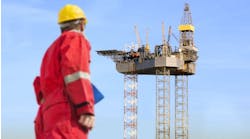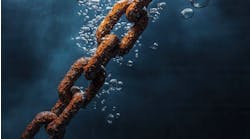Greg Gorbach
Vice President
ARC Advisory Group
Paul Miller
Senior Editor/Analyst
ARC Advisory Group
There may be important gaps in the way we run our businesses today. We all do some form of planning for risk, and we all make safety a priority – but sometimes, even this isn’t enough. Things can, and occasionally do, go wrong. However, there are many things that upstream oil and gas and other industrial companies can do to improve operational risk management and thereby help assure operational continuity.
Operational risk management (ORM) is the systematic process of planning for, identifying, analyzing, monitoring, responding to, and mitigating operational risks. It involves processes, tools, and techniques that will help maximize the probability and results of positive events and minimize the probability and consequences of adverse events.
While industry as a whole continues to demonstrate success in reducing the incidence of occupational injury and illness, focusing on personal safety alone is not sufficient and may not prevent serious accidents. Numerous high-profile incidents in the last couple of years heightened awareness that upstream organizations (both on- and offshore) need to pay more attention to process safety: preventing spills, leaks, equipment malfunctions, excessive pressures and temperatures, corrosion, metal fatigue, fires, explosions, and the like.
Process safety improvement programs typically consider multiple operational areas. These include design and engineering of production assets, hazard assessments, management of change, inspection, testing, and equipment maintenance. They also typically include alarms and alarm response; automation and control of production processes; implementation of process-safeguarding systems which ensure that effective procedures are in place and followed; training of personnel; human factors; and security.
Ensuring operational continuity
Operational risk management doesn’t happen in a vacuum. It is intimately intertwined with all the day-to-day business and operation pressures. To ensure operational growth and continuity, management should focus on four areas: operational performance, operational risk, human capital and culture, and environmental sustainability.
Achieving excellence in operational performance involves optimizing the normal processes involved in the day-to-day business. Typically, this involves a collection of applications and systems that improve or manage asset performance, flexibility and responsiveness, efficiency and cost control, business process management, quality, supply chain execution, and capital projects execution.
In many cases, the very same applications and systems form the basis for much of the data collection and business process execution involved in energy management and environmental sustainability initiatives, as well as people-centered initiatives such as training, knowledge management, safety culture creation and maintenance, organization, and community building.
It stands to reason that upstream production organizations should leverage these systems, where possible, and add visibility, analytics, workflow management, or other technologies to implement effective operational risk management initiatives.
Offshore risk management
While the United States currently uses a prescriptive approach to regulating risk management in the offshore oil and gas industry, many countries, including the UK, Australia, and Norway, use the safety case regime. This puts the onus on the operator to demonstrate that the facility is as safe as can be reasonably expected. This forces operators to be more proactive in anticipating potential hazards. The international standard, ISO 17776:2000, describes hazard identification and risk assessment tools and techniques for this purpose. The International Association of Drilling Contractors and other organizations publish guidelines for HSE case development, based on the ISO standard.
In May 2010, in the wake of theDeepwater Horizon disaster, the US Department of the Interior recommended a safety case regime and other measures to increase safety for deepwater drilling in the Gulf of Mexico. While the final Bureau of Ocean Energy Management, Regulation and Enforcement (BOEMRE) rule, issued in October 2010 as 30 CFR Part 250 didn’t go quite this far, it does require all operators in the outer continental shelf to develop and implement, in entirety, the previously voluntary safety and environmental management systems (SEMS) detailed in the American Petroleum Institute’s Recommended Practice (RP 75).
According to remarks made in February 2011 by BOEMRE director, Michael R. Bromwich, commenting on recent rulings, “We have raised the bar for equipment, safety, and environmental safeguards in the drilling and production stages of offshore operations – and we will continue to do so in open and transparent ways in the coming months and years. We have also introduced – for the first time – performance-based standards similar to those used by regulators in the North Sea.
“Operators are now required to develop a comprehensive safety and environmental program that identifies the potential hazards and risk-reduction strategies for all phases of activity, from well design and construction, to operation and maintenance, and finally, to the decommissioning of platforms. Although many companies had developed such SEMS systems on a voluntary basis in the past, many had not.”
Clearly, BOEMRE believes that requiring operators on the outer continental shelf to implement formal safety and environmental management systems will reduce the risk and number of accidents, injuries, and spills, and, in this manner, help close many of the gaps in the way some operators currently do business. However, many comments received during the public review process for the ruling questioned whether the rule would effectively address human factors, such as errors and behavior.
For more on the BOEMRE requirements for offshore operations and safety and environmental management system requirements, see page 40 where Eldon Ball, senior editor, Technology & Economics, talks with Kenneth G. Hurwitz of Haynes and Boone, LLP, Washington, D.C.
Offshore Articles Archives
View Oil and Gas Articles on PennEnergy.com


